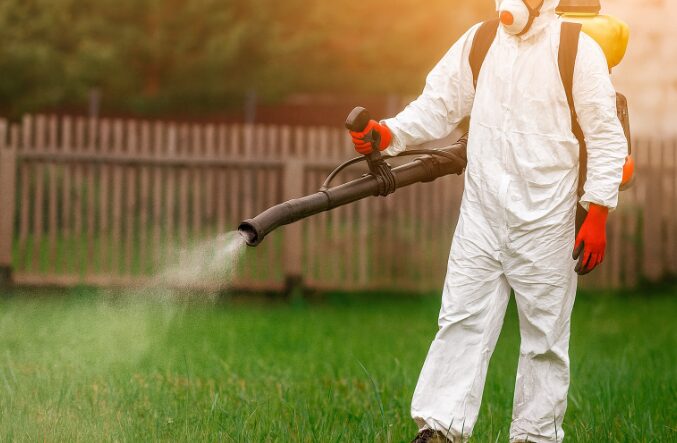You probably don’t think about pest control until you have to, like when ants invade the kitchen or something’s scratching inside your walls at 2 AM. A lot of people grab a can of bug spray and go to town, not really thinking about what’s in it or where that stuff ends up. But over time, all those chemicals? They don’t just disappear. They stick around, inside your walls, on your floors, in the air your kids breathe.
That’s why more homeowners are looking for better options, including safer ones. Environmentally safe pest control is starting to make more sense, especially if you’ve got pets or little ones crawling around. It’s not just about being green. It’s about not nuking your house with harsh stuff every time a bug shows up.
Start With the Basics: Block Them Out
First thing, before you even look at traps or sprays, block the pests out. They get in through tiny cracks, unsealed doors, open vents, and sometimes you bring them in yourself. Roaches hitch rides in cardboard boxes. Mice only need a hole the size of a dime. Spiders love clutter, the darker the better.
Look around your house, especially near baseboards, under sinks, and around doors. If there’s a gap, seal it. Steel wool works for rodents, silicone caulk for cracks. Even weather stripping can make a difference. It’s boring, sure, but it saves you a lot of hassle later.
Also, try this: clean up. Not just wipe-the-counters clean, but deep clean. Vacuum under appliances, wipe down trash cans, clean out that junk drawer where crumbs go to die. Pests are looking for food, water, and shelter. Don’t make it easy for them.
DIY Stuff That Actually Works
Some home remedies are garbage, let’s be honest. But a few of them do work if you use them right.
Peppermint oil is great for ants and mice. They hate the smell, and it messes with their scent trails. Mix 10 drops with water in a spray bottle, shake it up, and spray it around windows, door frames, and under cabinets.
Diatomaceous earth is another one. It’s a powder made from crushed fossils, feels soft to us but shreds bugs to pieces. Doesn’t kill them on contact, takes a couple days, but it works. Use food-grade only, not the pool stuff. Don’t breathe it in, either. Use it dry—if it gets wet, it’s useless until it dries again.
White vinegar and water can repel ants, especially if you clean surfaces where they’ve been. It erases their scent trails, confuses them. Not a magic trick, just a helpful trick.
The Good Bugs
Not all bugs are bad. In fact, some are your best defense. Ladybugs eat aphids. Green lacewings go after soft-bodied pests like mealybugs. Even spiders, if you can tolerate them, eat flies and mosquitoes.
If you’ve got a garden or even just a few potted plants, consider planting things that attract beneficial bugs. Dill, fennel, and yarrow are great. Avoid using pesticides outdoors, even “natural” ones, or you’ll wipe out the good guys too.
Birds help, too. Chickadees eat a ton of insects. So do wrens. Put up a birdhouse or two, maybe a birdbath. Don’t go overboard, just give them a reason to visit.
Skip the Bombs, Try Bait
Bug bombs look impressive, right? You set one off, leave the house, come back and everything’s dead. Except usually, it just pisses off the bugs and drives them deeper into the walls.
Instead, use bait. Especially for ants and roaches. It’s slower, but smarter. They take the poison back to the nest and kill the whole colony. The trick is patience. Don’t spray them while they’re carrying bait, let them go. Spraying ruins the plan.
Look for baits that use borax or boric acid which are low toxicity to people, but deadly to bugs. And always put the bait stations where pets and toddlers can’t reach them.
What’s In a Label?
Just because something says “natural” doesn’t mean it’s safe. Arsenic’s natural, too. So’s snake venom. Read the label. If it doesn’t list the active ingredients clearly, that’s a red flag.
Look for EPA registration, even on green products. Some genuinely safe products are exempt, but many still choose to register to prove they’ve been tested. Cedar oil, clove oil, and neem are common active ingredients in safer sprays. They don’t always smell great, but they’re a better alternative to stuff like permethrin or chlorpyrifos.
Also, don’t mix products unless you know what you’re doing. Some combos can release toxic fumes, especially with bleach or ammonia. If you’re not sure, don’t do it.
Integrated Pest Management Sounds Fancy, Works Well
IPM isn’t a product. It’s a mindset. It means you monitor the problem, act only when needed, and use the least harmful method that gets the job done. It’s what schools and hospitals use. You don’t need a science degree to follow it.
Here’s a simplified IPM plan:
- Identify the pest. Not just “bugs,” but what kind.
- Figure out how they’re getting in.
- Seal entry points.
- Clean up food, water, and clutter.
- Use traps or baits before sprays.
- If you do spray, use targeted, lower-toxicity products.
- Track what works, adjust as needed.
It’s not flashy, but it works better long term. Less re-infestation, less waste, fewer chemicals in your air and water.
When You Need Backup
Sometimes, you just can’t DIY your way out of it. Bed bugs, termites, and big rodent infestations call for a pro. Doesn’t mean you need to hand over your values, though.
Plenty of pest control companies now offer green options. Some specialize in it. Ask them straight up:
- Do you use IPM?
- Are your treatments pet-safe?
- Can I see the ingredient list?
If they dodge those questions, call someone else.
Also, don’t sign long-term contracts right away. Try a one-time treatment first. See how they do.
A Cleaner Kind of Clean
Going green with pest control doesn’t mean living with bugs. It means being smart, being cautious, and thinking ahead. You can keep your home clean, healthy, and pest-free without soaking everything in chemicals.
It’s not about perfection. You’ll still get the occasional fly or sugar ant. That’s life. But you won’t be breathing in toxic fumes every time you deal with it. And you won’t be wondering if your kid’s cough is from whatever you sprayed under the sink last month.
In the end, it’s about balance. About protecting your home without hurting what’s inside it.



































